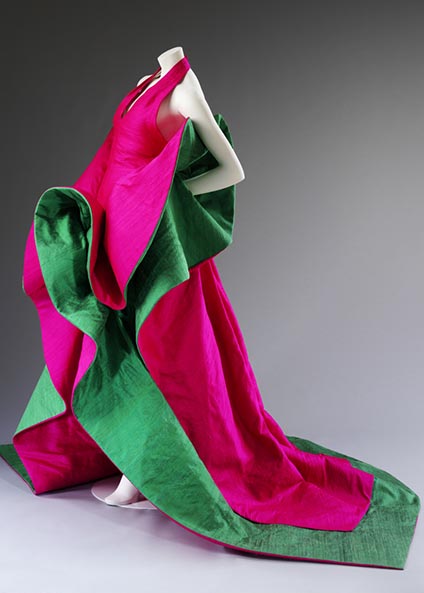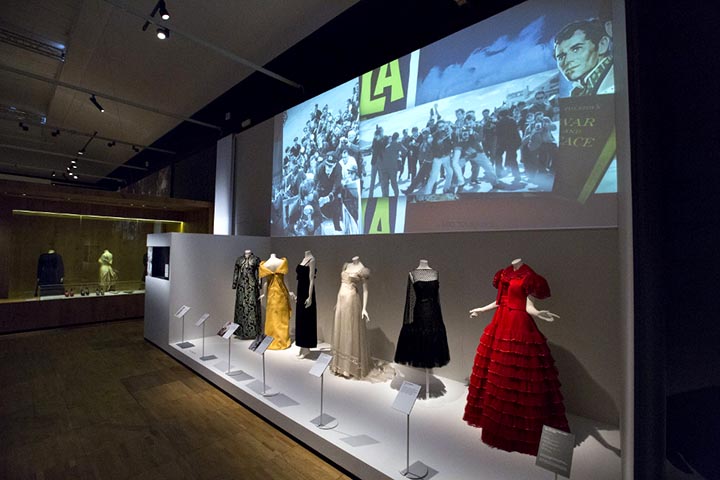The Victoria & Albert Museum (V&A) could not find a better way to start the spring season than with a tribute to ‘Made in Italy’ through a dazzling exhibition currently on display entitled: The Glamour of Italian Fashion 1945-2014, sponsored by Bulgari – who are celebrating their 130th year – and curated by Sonnet Stanfill, curator of 20th Century and contemporary fashion at the V&A.
“I have been working for over 2 years [on this project] and it has taken me to over 30 archives around Italy and beyond”. It is Sonnet’s dedication and the efforts of her team that have made this exhibition of 100 garments one of the most comprehensive ensembles of Italian fashion and has attracted an elite crowd of fashion designers, models, socialites and even the Italian Prime Minister to the launch party.
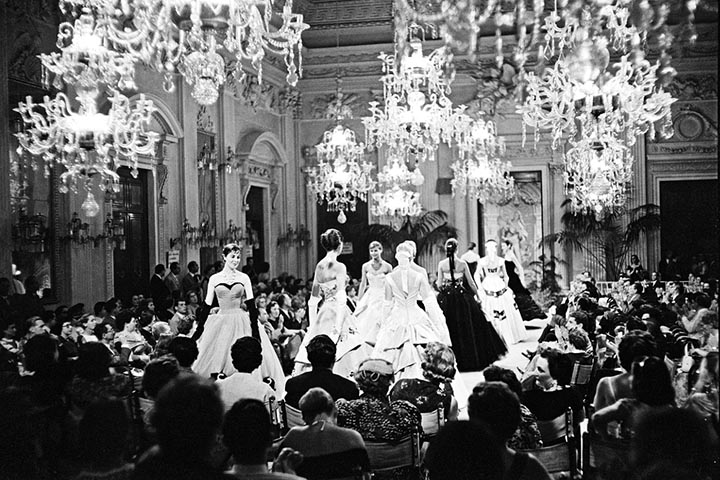
The Victoria & Albert Museum Exhibition
As I arrive at the exhibition I am so excited to discover what ‘Made in Italy’ is all about that I rush my complimentary Nespresso at reception and dive straight across the threshold. The exhibition starts with two suits from the WWII era, a time when design was limited by the restrictions of fabrics and decorative details. As I move through, the first room, a marvellous collection of vintage gowns from the 1950s, transports you to the opulent Sala Bianca (White House) in Palazzo Pitti in the post-war years where international buyers and the global fashion press celebrated ‘Made in Italy’ in the most glamorous way.
It all started with the Florentine entrepreneur Giovanni Battista Giorgini who, on 12th February 1951, successfully brought journalists and buyers from around the world to the first ever fashion show, in Florence. Hosted in his own residence, the unique performance featured Emilio Schuberth, Sorelle Fontana (the Fontana sisters), Contessa Simonetta Visconti, Roberto Capucci, Alberto Fabiani, Jole Veneziani and Emilio Pucci, the latter is the only house that is still in existence today. For me, the most eye-catching dresses in the room were an evening gown in shades of pink from Emilio Shuberth and an evening gown with metallic embroidery from the Fontana sisters.
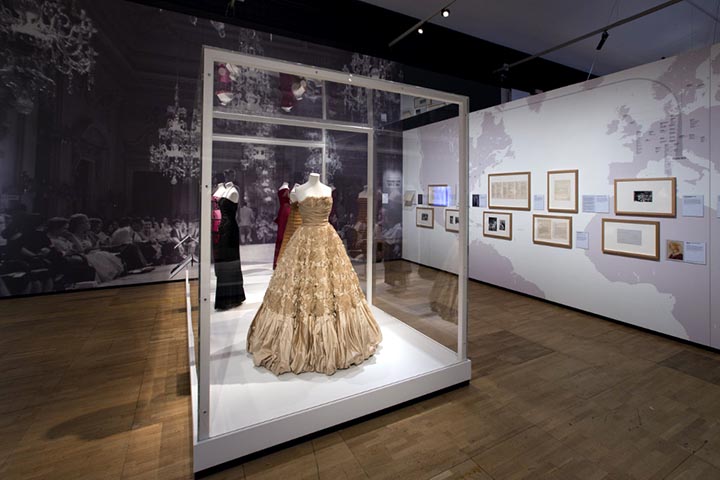
In the 1950s and 1960s, Hollywood stars fascinated by the quality and variety of Italian textiles and designs, like Elizabeth Taylor and Audrey Hepburn, helped to put Italian fashion on the map. It is the relationship between the dressmaker and these exclusive clients that is featured in the second room of the exhibition with a series of gowns, shoes, gloves, bags and accessories that belonged to Hollywood stars and prominent figures of the time. Among the pieces on displayed there is Elizabeth Taylor’s impressive Emerald jewellery (necklace, brooch and ring) from Bulgari Heritage Collection as well as a gown designed by Fernanda Gattinoni for Audrey Hepburn that she wore in War & Peace.
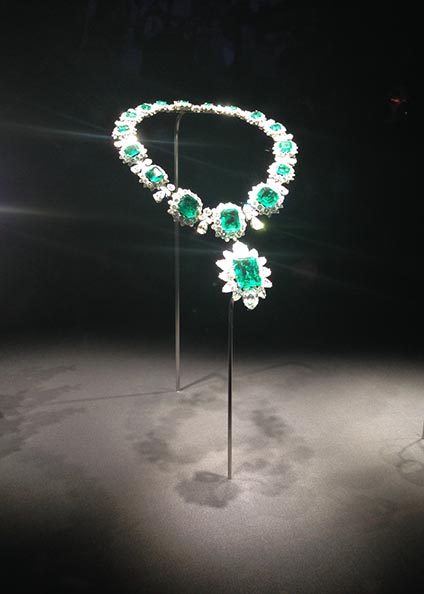
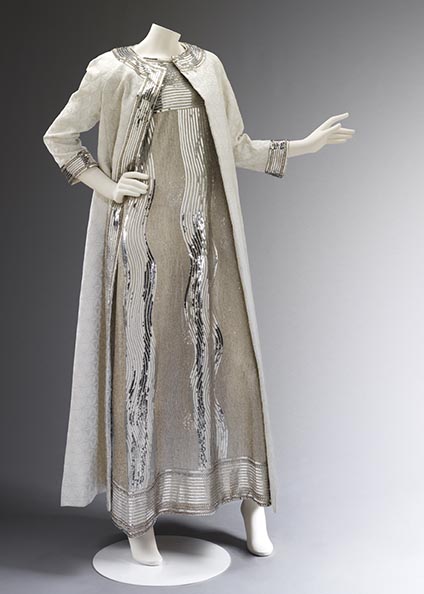
Evening dress of embroidered net and matelasse coat. Mila Schön, 1966. Courtesy Maison Mila Schön, ©Victoria and Albert Museum, London.
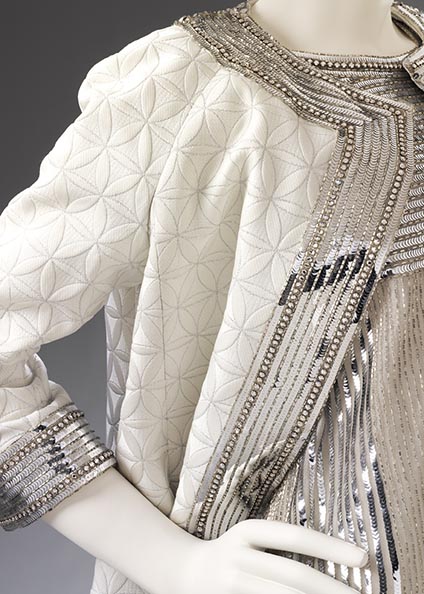
What ‘made in Italy’ Is All About
One third of the exhibition focuses on Italy’s reputation for tailoring. As Sonnet explains:
“Italian fashion is known for notable menswear, and expert tailoring became one of Italy’s first fashion exports. Italian tailoring after the War was considered sleeker and more daring in the finer details such as slimmer lapels, sharper lines and lighter fabrics.”
Among the suits on display there is one from Angelo Litrico made for John F Kennedy in 1963 and a suit for Vittorio de Sica featuring a distinctive egg-shaped shoulder made by Naples tailoring firm Rubinacci. As Mariano Rubinacci, Chairman of Rubinacci states:
“The suit we made for Mr. de Sica in 1954 is almost the same suit that we are making today; it has been almost 100 years that we wear suits in the same way. Women’s fashion changes from one year to another but this is not the case in menswear. There are only changes in the fabrics which are becoming lighter and lighter and the attitude of the manufacturer to produce a proper suit.”
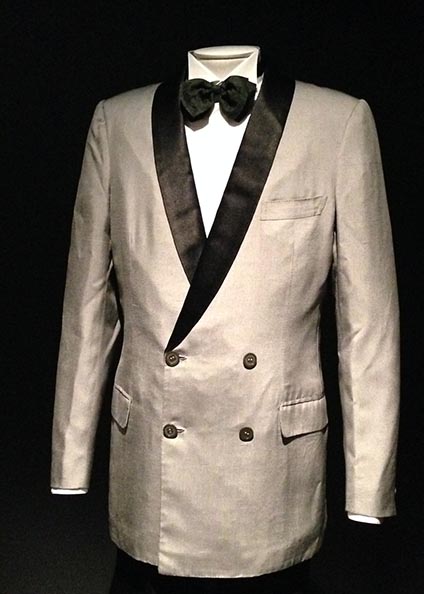
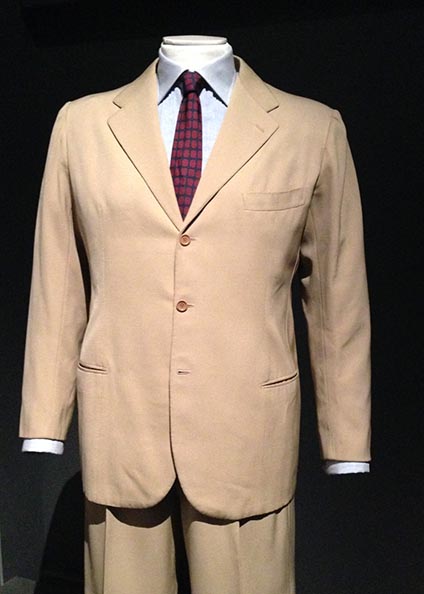
Rubinacci’s peculiarity is that they follow individually each customer and make bespoke suits that do not follow fashion but the customer’s attitude, emphasizing the silhouette, as Rubinacci wants the customer to feel confident, elegant and comfortable and have adequate freedom and softness.
For us it is more important the inside than the outside.
The second half of the exhibition focuses on manufacturing and ready to wear, primarily on the strength of the Italian factories and the new fashion figure: the stilista. As Sonnet explains:
The Elite consumers were convinced that ready to wear was the new fashion language.
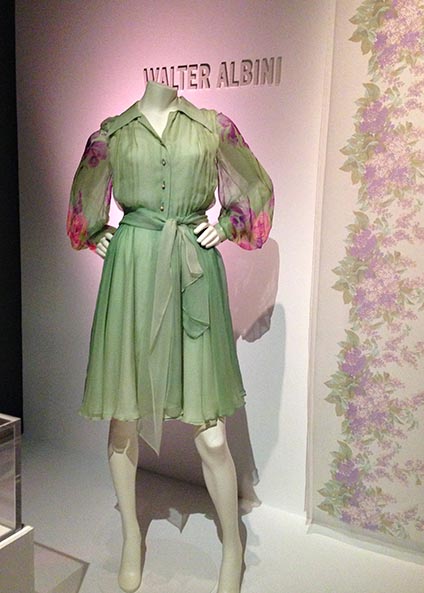
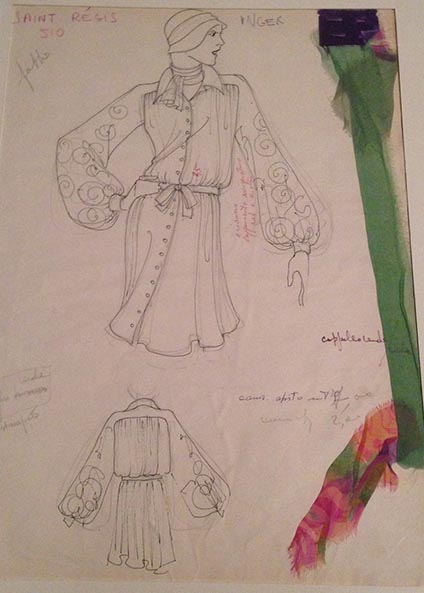
This movement began in the 1970s and is beautifully visualised through dresses from Walter Albini, Armani and Versace moving on into the 1980s and 1990s with Romeo Gigli, Trussardi, Moschino and many others.
The last part of the exhibition highlights the evolution of many Italian designers into global brands from the mid-1990s to the present day. In the room entitled “The Cult of the Fashion Designer”, the gowns and accessories on display belong to designers turned celebrities such as Armani, the House of Valentino, Dolce & Gabbana, Marni, and many others – a mix of acclaimed international luxury brands, designers and new comers that share the same loyal clientele thirsty for high quality and originality. Sonnet sees this search for quality as a cornerstone of the ‘Made in Italy’:
“Italians buy by investing in pieces that are meant to be in their wardrobe for a very long time. It is about finding the perfectly tailored jacket or the right pair of shoes, made with the craftsmanship which will mean they last for a long time.”
Sonnet is very conscious of emerging market growth in consumption, production, investment and the economic tensions that Italian fashion is experiencing. She has dedicated a space where a video with a series of interviews with protagonists of the Italian fashion industry talk about the future of ‘Made in Italy’. For Sonnet the future of Italian fashion “…lies in the higher end where Italians have always excelled. The ‘Made in Italy’ brand needs to be understood and the provenance needs to be genuine for the future of Italian fashion to remain strong.”
The future of ‘Made in Italy’ also lies in the hands of younger generations. As Sonnet points out: “More needs to be done in mentoring young up-and-coming designers, like Franca Sozzani’s recent efforts, to ensure that young Italian talent has a place to show and collections that are bought, otherwise Milan as a fashion capital will cease to be relevant.” Mariano Rubinacci adds:
We are focusing on the future and this is reflected in our community as 80 percent of our employees are under 40 years old – they are the future!.
